-

新人教版高中英语选修2Unit 4 Learning about Language教学设计
This section guides students to pay attention to the typical context of vocabulary use, helps students accumulate vocabulary around the key vocabulary of this unit, and uses the learned words and word chunks in different contexts to deeply understand their meaning and usage, so as to achieve the purpose of review and consolidation.The teaching design activities aim to guide students to pay attention to the typical context in which the target vocabulary is used, as well as the common vocabulary used in collocation, so that students can complete the sentence with correct words. In terms of vocabulary learning strategies, this unit focuses on cultivating students' ability to pay attention to collocation of words and to use word blocks to express meaning.For vocabulary learning, it is not enough just to know the meaning of a single word, but the most important thing is to master the common collocations of words, namely word blocks.Teachers should timely guide students to summarize common vocabulary collocation, such as verb and noun collocation, verb and preposition collocation, preposition and noun collocation, and so on.1. Guide students to understand and consolidate the meaning and usage of the vocabulary in the context, 2. Guide the students to use the unit topic vocabulary in a richer context3. Let the students sort out and accumulate the accumulated vocabulary, establishes the semantic connection between the vocabulary,4. Enable students to understand and master the vocabulary more effectivelyGuiding the Ss to use unit topic words and the sentence patterns in a richer context.

新人教版高中英语选修2Unit 4 Using langauge-Listening教学设计
The theme of the listening section is " talking about scenery and culture along a journey."The part is designed to further lead the students to understand Canadian natural geography and social environment, and integrated into the cultural contrast by mentioning the long train journey from Beijing to Moscow routes. On this basis, the part activates students related travel experience, lets the student serial dialogue, guides the student to explore further the pleasure and meaning of the long journey, and Chinese and foreign cultural comparison.The part also provides a framework for the continuation of the dialogue, which is designed to provide a framework for students to successfully complete their oral expressions, and to incorporate an important trading strategy to end the dialogue naturally.1. Help students to understand and master some common English idioms in the context, and experience the expression effect of English idioms.2. Guide the students to understand the identity of different people in the listening context, and finish the dialogue according to their own experience.3. Instruct the students to use appropriate language to express surprise and curiosity about space and place in the dialogue, and master the oral strategy of ending the dialogue naturally.1. Instruct students to grasp the key information and important details of the dialogue.2. Instruct students to conduct a similar talk on the relevant topic.

新人教版高中英语选修2Unit 5 Learning about Language教学设计
The purpose of this section of vocabulary exercises is to consolidate the key words in the first part of the reading text, let the students write the words according to the English definition, and focus on the detection of the meaning and spelling of the new words. The teaching design includes use English definition to explain words, which is conducive to improving students' interest in vocabulary learning, cultivating their sense of English language and thinking in English, and making students willing to use this method to better grasp the meaning of words, expand their vocabulary, and improve their ability of vocabulary application. Besides, the design offers more context including sentences and short passage for students to practice words flexibly.1. Guide students to understand and consolidate the meaning and usage of the vocabulary in the context, 2. Guide the students to use the unit topic vocabulary in a richer context3. Let the students sort out and accumulate the accumulated vocabulary, establishes the semantic connection between the vocabulary,4. Enable students to understand and master the vocabulary more effectivelyGuiding the Ss to use unit topic words and the sentence patterns in a richer context.Step1: Read the passage about chemical burns and fill in the blanks with the correct forms of the words in the box.

新人教版高中英语选修2Unit 5 Using langauge-Listening教学设计
The theme of this section is to learn how to make emergency calls. Students should learn how to make emergency calls not only in China, but also in foreign countries in English, so that they can be prepared for future situations outside the home.The emergency telephone number is a vital hotline, which should be the most clear, rapid and effective communication with the acute operator.This section helps students to understand the emergency calls in some countries and the precautions for making emergency calls. Through the study of this section, students can accumulate common expressions and sentence patterns in this context. 1.Help students accumulate emergency telephone numbers in different countries and learn more about first aid2.Guide the students to understand the contents and instructions of the telephone, grasp the characteristics of the emergency telephone and the requirements of the emergency telephone.3.Guide students to understand the first aid instructions of the operators.4.Enable Ss to make simulated emergency calls with their partners in the language they have learned1. Instruct students to grasp the key information and important details of the dialogue.2. Instruct students to conduct a similar talk on the relevant topic.Step1:Look and discuss:Match the pictures below to the medical emergencies, and then discuss the questions in groups.

部编版小学语文四年级下册第25课《两个铁球同时着地》优秀教案范文
1、齐读第三自然段。思考:亚里士多德讲过什么话?伽利略对这话是怎么看的?(亚里士多德说过:“两个铁球,一个10磅重,一个1磅重,同时从高处落下来,10磅重的一定先着地,速度是1磅重的10倍。”伽利略对这话产生了怀疑)2、伽利略为什么怀疑亚里士多德说的话?他是怎么想的?(“他想:如果这句话是正确的,……这怎么解释呢?”)3、伽利略的分析,是把亚里士多德的话当作两种假设,推出两个结论。这两个结论是什么?(①把一个10磅重,一个1磅重的两个铁球拴在一起,如果仍然看作是两个球,落下的速度应当比原来10磅重的铁球慢。②如果看做是一个整体,落下的速度,应当比原来10磅重的铁球快)4.这两个结果一样吗?是什么样的结果?(不—样,是相互矛盾的)5.根据同一句话,会推出两个相互矛盾的结果,所以伽利略认为这句话是靠不住的,值得怀疑。6,他打算怎么做?(用试验来证明不同重量铁球落地的情况)
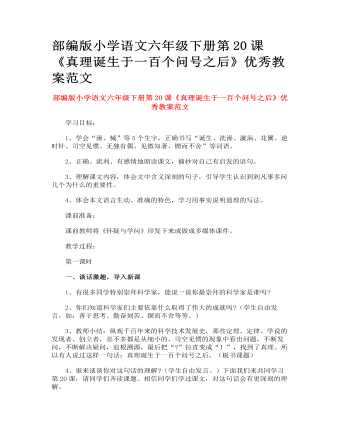
部编版小学语文六年级下册第20课《真理诞生于一百个问号之后》优秀教案范文
1、认真读课文,边读边想课文每个自然段都写了什么,给课文划分段落。2、学生交流段落划分,说明分段理由。3、教师对照板书进行小结:这篇课文思路特别明晰,作者开门见山提出自己的观点,明确指出“真理诞生于一百个问号之后”这句话本身就是“真理”,然后概括地指出在千百年来的科学技术发展史上,那些定理、定律、学说都是在发现者、创造者解答了“一百个问号之后”才获得的,由此引出科学发展史上的三个有代表性的确凿事例,之后对三个典型事例作结,强调这三个事例“都是很平常的事情”,却从中发现了真理,最后指出科学发现的“偶然机遇”只能给有准备的人,而不会给任何一个懒汉。
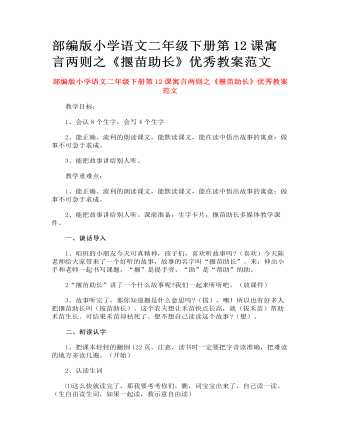
部编版小学语文二年级下册第12课寓言两则之《揠苗助长》优秀教案范文
谈话导入 1、咱班的小朋友今天可真精神,孩子们,喜欢听故事吗?(喜欢)今天陈老师给大家带来了一个好听的故事,故事的名字叫“揠苗助长”。来,伸出小手和老师一起书写课题,“揠”是提手旁,“助”是“帮助”的助。 2“揠苗助长”讲了一个什么故事呢?我们一起来听听吧。(放课件) 3、故事听完了,那你知道揠是什么意思吗?(拔),噢!所以也有好多人把揠苗助长叫(拔苗助长)。这个农夫想让禾苗快点长高,就(拔禾苗)帮助禾苗生长。可结果禾苗却枯死了。想不想自己读读这个故事?(想)。
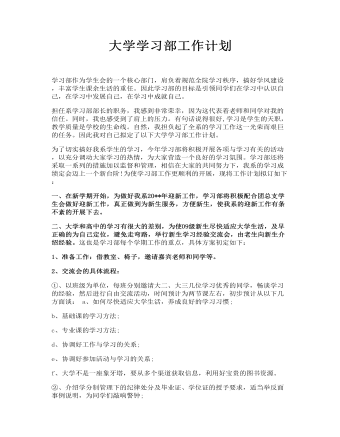
大学学习部工作计划
A、学期初,每个同学都有综合分100分。B、晨点每周点五天,时间为6:40—7:10,地点为灯光球场。C、缺勤一次扣2分,迟到扣0.5分,替点的双方都扣2分,情节严重者公示批评。D、此综合分将在期末进行统计,并与奖学金挂钩。
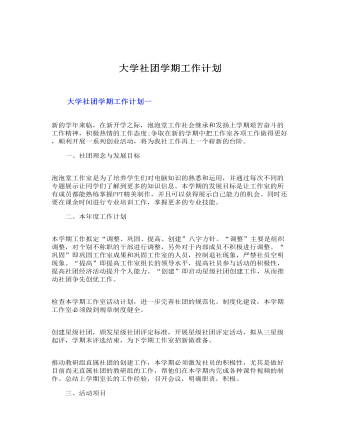
大学社团学期工作计划
一、社团理念与发展目标 泡泡堂工作室是为了培养学生们对电脑知识的熟悉和运用,并通过每次不同的专题展示让同学们了解到更多的知识信息。本学期的发展目标是让工作室的所有成员都能熟练掌握PPT精美制作,并且可以获得展示自己能力的机会。同时还要在课余时间进行专业培训工作,掌握更多的专业技能。 二、本年度工作计划 本学期工作拟定“调整、巩固、提高、创建”八字方针。“调整”主要是组织调整,对个别不称职的干部进行调整,另外对于内部成员不积极进行调整。“巩固”即巩固工作室成果和巩固工作室的人员,控制退社现象,严禁社员空明现象。“提高”即提高工作室组长的领导水平,提高社员参与活动的积极性,提高社团经济活动提升个人能力。“创建”即启动星级社团创建工作,从而推动社团争先创优工作。
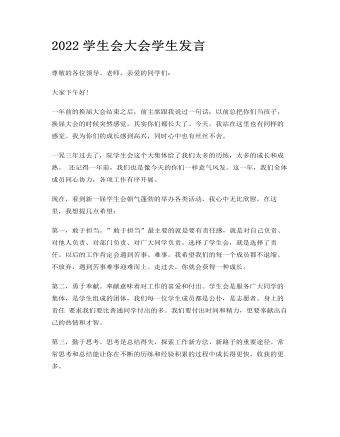
2022学生会大会学生发言
一个学年以来,团委学生会干部队伍领导我们,秉着全心全意为同学服务的理念,克服分系带来的重重阻力,坚定信心,迎难而上,为我系学生工作做出不可磨灭的贡献。在此,我向他们表示最崇高的敬意。一个学年以来,我用我满腔的热情积极配合学生会以及分团委的工作,做事认真负责,伴随着我系学生工作蒸蒸日上,我在这个大家族里面成长了许多,见证了我们铁道信号与工程系的辉煌崛起。一个学年以来,我一次次接受洗礼,也确定了我的奋斗目标。而此刻,我的目标是成功竞选成为副主席,而成为副主席后更大的目标是协助我系学生干部领导核心队伍振兴学生会,我将在未来的一年中,以更大的热情与激情投入到振兴系部的工作中。
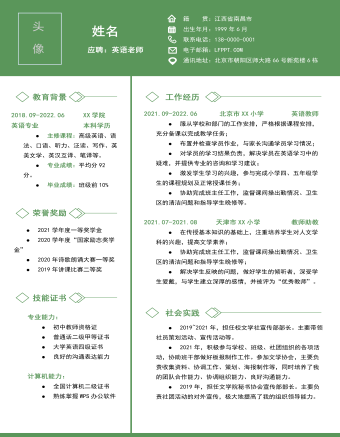
小学英语老师应聘学校教师简历
l 服从学校和部门的工作安排,严格根据课程安排,充分备课以完成教学任务;l 布置并检查学员作业,与家长沟通学员学习情况;l 对学员的学习结果负责,解决学员在英语学习中的疑难,并提供专业的咨询和学习建议;l 激发学生学习的兴趣,参与完成小学四、五年级学生的课程规划及正常授课任务;l 协助完成班主任工作,监督课间操出勤情况、卫生区的清洁问题和指导学生晚修等。l 在传授基本知识的基础上,注重培养学生对人文学科的兴趣,提高文学素养;l 协助完成班主任工作,监督课间操出勤情况、卫生区的清洁问题和指导学生晚修等;
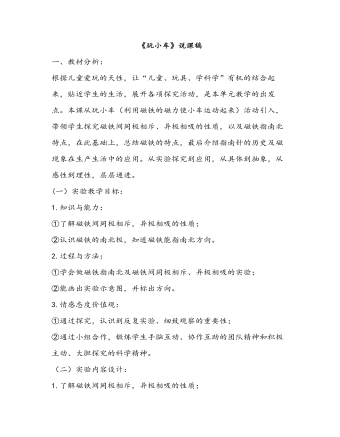
小学科学鄂教版三年级上册《玩小车》说课稿
(一)实验教学目标:1.知识与能力:①了解磁铁间同极相斥,异极相吸的性质;②认识磁铁的南北极,知道磁铁能指南北方向。2.过程与方法:①学会做磁铁指南北及磁铁间同极相斥、异极相吸的实验;②能画出实验示意图,并标出方向。
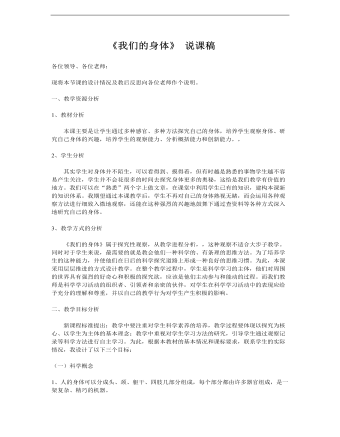
小学科学鄂教版五年级上册《我们的身体》说课稿
2、学生分析 其实学生对身体并不陌生,可以看得到、摸得着,但有时越是熟悉的事物学生越不容易产生关注,学生并不会花很多的时间去探究身体更多的奥秘,这恰是我们教学有价值的地方。我们可以在“熟悉”两个字上做文章,在课堂中利用学生已有的知识,建构本课新的知识体系。我期望通过本课教学后,学生不再对自己的身体熟视无睹,而会运用各种观察方法进行细致入微地观察,还能在这种强烈的兴趣地鼓舞下通过查资料等各种方式深入地研究自己的身体。

人教版小学语文下册说课稿《学弈》《两小儿辩日》
一、说教材 1.教材内容:九年义务教育六年制小学语文第十一册第八组第二十五课《学弈》。 2.教材简析:《学弈》这篇文言文选自《孟子·告子》,通过弈秋教两个人学下围棋的事,说明了做事必须专心致志,决不可三心二意的道理。文章先说弈秋是全国最擅长下围棋的人,然后讲弈秋同时教两个学习态度不同的人下围棋,学习效果截然不同,最后指出这两个人学习结果不同,并不是在智力上有多大差异。文言文是古代文明传承的媒介,虽与现代文在用词造句、朗读上有很大差别,但两者却有着千丝万缕、不可分割的内在联系
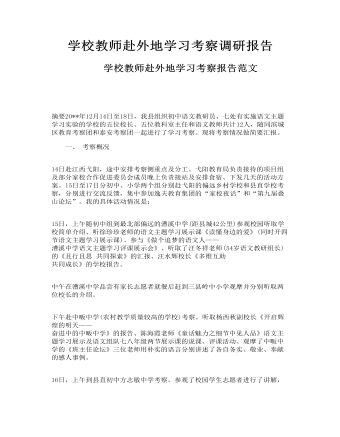
学校教师赴外地学习考察调研报告
二、 突出亮点 弋阳教育人的坦诚与热情。针对本次考察,弋阳县教体局按照项目负责的方式成立项目部,所有欲参加展示的学校,通过自主申报、项目组考察最后确定展示学校。各学校按照方华局长“把真实的我们,展示给考察的客人” 的要求,热情地为我们呈现了原生态的弋阳教育。令所有考察人员大呼“感谢!” 弋阳教育人的务实与敬业。不论是教体局领导,还是一般教师;不论是刚刚入职的“嫩芽”,还是面临退休的“老将”。对工作的务实敬业都让考察人员感到“震撼”!
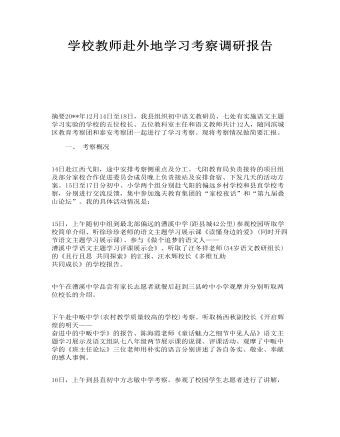
学校教师赴外地学习考察调研报告
一、 考察概况 14日赴江西弋阳,途中安排考察侧重点及分工。弋阳教育局负责接待的项目组及部分家校合作促进委员会成员晚上负责接站及安排食宿、下发几天的活动方案。15日至17日分初中、小学两个组分别赴弋阳的偏远乡村学校和县直学校考察,分别进行交流反馈,集中参加逸夫教育集团的“家校夜话”和“第九届叠山论坛”。我的具体活动情况是: 15日,上午随初中组到最北部偏远的漕溪中学(距县城42公里)参观校园听取学校简单介绍、听徐珍珍老师的语文主题学习展示课《读懂身边的爱》(同时开四节语文主题学习展示课)、参与《做个追梦的语文人——漕溪中学语文主题学习评课展示会》、听取了汪冬祥老师(54岁语文教研组长)的《且行且思 共同探索》的汇报、汪水辉校长《多维互助共同成长》的学校报告。 中午在漕溪中学品尝有家长志愿者就餐后赶到三县岭中小学观摩并分别听取两位校长的介绍。
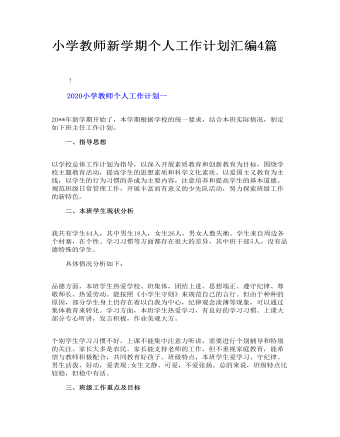
小学教师新学期个人工作计划汇编4篇
一、指导思想 以学校总体工作计划为指导,以深入开展素质教育和创新教育为目标,围绕学校主题教育活动,提高学生的思想素质和科学文化素质、以爱国主义教育为主线,以学生的行为习惯的养成为主要内容,注意培养和提高学生的基本道德。规范班级日常管理工作,开展丰富而有意义的少先队活动,努力探索班级工作的新特色。
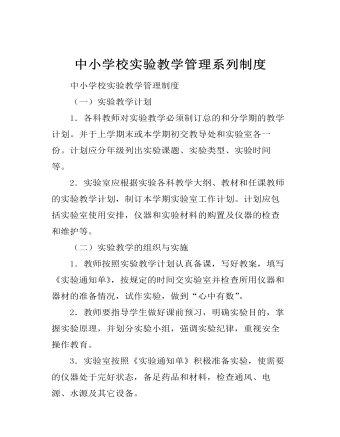
中小学校实验教学管理系列制度
1.各科教师对实验教学必须制订总的和分学期的教学计划。并于上学期末或本学期初交教导处和实验室各一份。计划应分年级列出实验课题、实验类型、实验时间等。 2.实验室应根据实验各科教学大纲、教材和任课教师的实验教学计划,制订本学期实验室工作计划。计划应包括实验室使用安排,仪器和实验材料的购置及仪器的检查和维护等。 (二)实验教学的组织与实施 1.教师按照实验教学计划认真备课,写好教案,填写《实验通知单》,按规定的时间交实验室并检查所用仪器和器材的准备情况,试作实验,做到“心中有数”。 2.教师要指导学生做好课前预习,明确实验目的,掌握实验原理,并划分实验小组,强调实验纪律,重视安全操作教育。 3.实验室按照《实验通知单》积极准备实验,使需要的仪器处于完好状态,备足药品和材料,检查通风、电源、水源及其它设备。
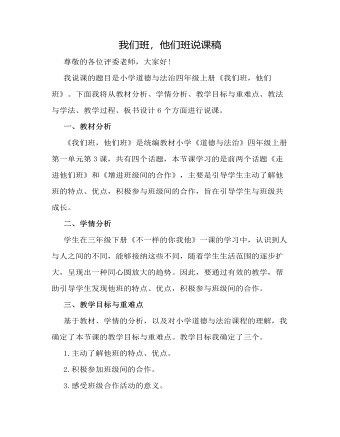
人教部编版道德与法制四年级上册我们班他们班说课稿
在上面两个活动的基础上,教师引导学生交流:你认为开展这类班级合作活动有什么意义?大家可以从中收获什么?板书:与班级共成长。设计意图:引导学生感受并认识班级间合作的意义。环节三:课堂小结,内化提升学生谈一谈学习本节课的收获,教师相机引导。设计意图:梳理总结,体验收获与成功的喜悦,内化提升学生的认识与情感。环节四:布置作业,课外延伸今后的学校生活中,积极地参与班级间的合作。设计意图:将课堂所学延伸到学生的日常生活中,有利于落实行为实践。六、板书设计为了突出重点,让学生整体上感知本节课的主要内容,我将以思维导图的形式设计板书:在黑板中上方的中间位置是课题《我们班,他们班》,下面是:班级的各种特点,积极参与班级间的合作,与班级共成长
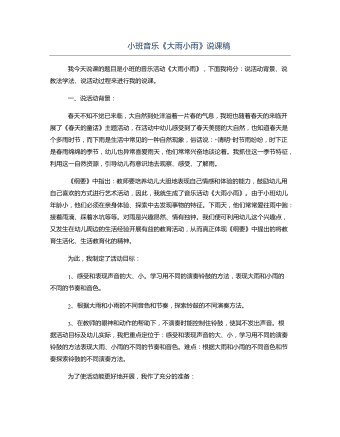
小班音乐《大雨小雨》说课稿
春天不知不觉已来临,大自然到处洋溢着一片春的气息,我班也随着春天的来临开展了《春天的童话》主题活动,在活动中幼儿感受到了春天美丽的大自然,也知道春天是个多雨时节,而下雨是生活中常见的一种自然现象,俗话说:“清明”时节雨纷纷,时下正是春雨绵绵的季节,幼儿也异常喜爱雨天,他们常常兴奋地谈论着。我抓住这一季节特征,利用这一自然资源,引导幼儿有意识地去观察、感受、了解雨。《纲要》中指出:教师要培养幼儿大胆地表现自己情感和体验的能力,鼓励幼儿用自己喜欢的方式进行艺术活动,因此,我就生成了音乐活动《大雨小雨》。由于小班幼儿年龄小,他们必须在亲身体验、探索中去发现事物的特征。下雨天,他们常常爱往雨中跑:接着雨滴、踩着水坑等等。对雨是兴趣昂然、情有独钟。我们便可利用幼儿这个兴趣点,又发生在幼儿周边的生活经验开展有益的教育活动,从而真正体现《纲要》中提出的将教育生活化、生活教育化的精神。

